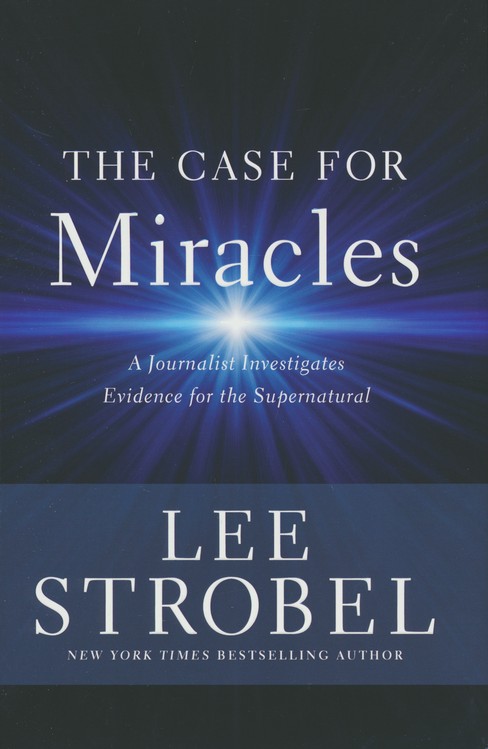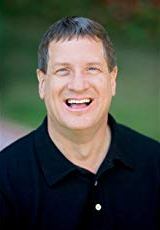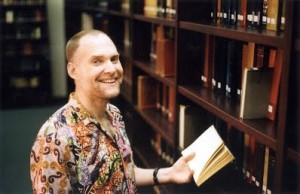Lee Strobel: The Case for Miracles
 Lee Strobel, The Case for Miracles: A Journalist Investigates Evidence for the Supernatural (Zondervan, 2018), 320 pages, ISBN 9780310259183
Lee Strobel, The Case for Miracles: A Journalist Investigates Evidence for the Supernatural (Zondervan, 2018), 320 pages, ISBN 9780310259183
The Case for Miracles marks the latest installment in Lee Strobel’s series of “The Case for…” books. Strobel, a former atheist and award winning legal editor of the Chicago Tribune, is probably best known for his 1998 book, The Case for Christ, and with over twenty books under his belt, he has established himself as a well-respected voice in the world of Christian apologetics.
What makes Strobel’s “cases” so compelling is the fact that, as a journalist with a legal background and the former perspective of an atheist, he tries to employ an objective approach to all his work by taking on the role almost akin to that of a private investigator.
As has come to be expected by those familiar with Strobel’s work, The Case for Miracles takes the form of a series of interviews that function as the various chapters of the book. He takes the bold step of first interviewing Dr. Michael Shermer, founder of The Skeptics Society and editor-in-chief of the magazine, Skeptic. Interestingly, Shermer comes from an antipodal position of being a former Christian turned agnostic. Shermer’s skepticism was cemented with unanswered prayer regarding his college sweetheart who was paralyzed in a car accident. As is often the case with so many who have tuned their back on God, it begins with the perceived radio silence of a God they used to think existed.

Lee Strobel
Shermer makes what appears to be some cogent arguments against the existence of miracles. He cites anecdotal evidence as questionable and inconclusive and goes on to reference The Study of the Therapeutic Effects of Intercessory Prayer (STEP). Through the Harvard Medical School, STEP was a ten-year, $2.4 million clinical trial of the effects of prayer involving 1,802 cardiac bypass patients at six hospitals (p. 51). The results showed that “there was no difference in the rate of complications for patients who were prayed for and those who were not.” (p. 51). Translate that as ‘prayer changes nothing’, or in Shermer’s words, “That’s not good for your side, Lee.” (p. 52). Shermer goes on to acknowledge the work of Scottish philosopher, David Hume, as influential on his view towards miracles or anything supernatural, saying, “Oh yeah. I think his treatise against miracles is pretty much a knockdown argument. Everything else is a footnote.” (p. 54).
While the first three chapters are dedicated to expounding Michael Shermer’s criterion for miracles being unlikely to impossible, the rest of the book focuses on the evidence that favors miracles. Strobel begins with interviewing Dr. Craig Keener.

At the Craig S. Keener author page at PneumaReview.com you will find numerous articles, reviews, lectures, and videos about biblical studies, including excerpts from Miracles: The Credibility of the New Testament Accounts.
Craig Keener, a prolific New Testament scholar and author, has among many works, penned a two-volume epic study of miracles. He is quick to refute Hume’s “knockdown” argument against the validity of miracles. “Hume defines miracle as a violation of natural law, and he defines natural law as being principles that cannot be violated. So, he’s ruling out the possibility of miracles at the outset. He’s assuming that which he’s already stated he will prove—which is circular reasoning. In fact, it’s an anti-supernatural bias, not a cogent philosophical argument.” Keener goes on to cite a number of modern-day miracles that he has investigated. One of the most impressive and moving miracles documents the case of a woman who, due to multiple sclerosis, had deteriorated to the point of death and was in hospice care confined to a bed and unable to care for herself. After a radio station of Moody Bible Institute put out a prayer request for the woman and some 450 Christians shared they were praying for the woman, she heard a voice from behind her say, “My child get up and walk” (p. 103). What resulted was a full and complete recovery that, thirty years later, still confounds the medical community. There are years of medical records to substantiate the illness and recovery, and the attestation of board certified surgeons with thousands of operations under their belts.
Category: Living the Faith, Summer 2018


